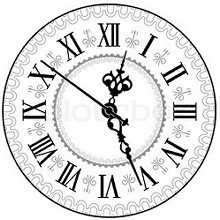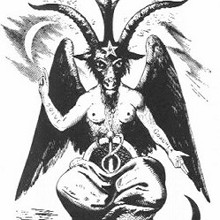
by Gideon Marcus
I used to call The Magazine of Fantasy and Science Fiction "dessert." Of all the monthly sf digests, it was the cleverest, the one most willing to take risks, and the most enjoyable reading. Over the past two years, I've noticed a slow but decided trend into the realm of "literary quality." In other words, it's not how good the stories are, or how fun the reading – they must be experimental and erudite to have any merit. And if you don't get the pieces, well, run off to Analog where the dumb people live.

A kind of punctuation mark has been added to this phenomenon. Avram Davidson, that somber-writing intellectual with an encyclopedic knowledge and authorial credits that take up many sheets of paper, has taken over as editor of F&SF from Robert Mills. Five years ago, I might have cheered. But Davidson's path has mirrored that of the magazine he now helms: a descent into literary impenetrability. Even his editorial prefaces to the magazine's stories are off-putting and contrived.
I dunno. You be the judge.

Gifts of the Gods, by Jay Williams
The premise of Gifts isn't bad: aliens come from the stars to find Earth's most advanced nation, and it turns out they're the most primitive, technologically. It's three shades too heavy on the sermon, and it fails by its own rules (i.e. one can lambast states as a whole for not being perfectly self-actualized, but surely there are a thousand qualifying people within any given country that fulfill the ET's requirements). But then, these aliens seem to have shown up just to rub our noses in it. Advanced indeed. Two stars.
The Last Element, by Hugo Correa
Editor Davidson touts Sr. Correa as a brilliant find from Chile. Sadly, this meandering piece involving (I guess) space soldiers who are undone in their attempts to mine a psychotropic mineral from a distant planet, feels incompletely translated from the Spanish. It reads like an Italian sf film views. Two stars.
The End of Evan Essant… ?, by Sylvia Edwards
A cute piece, more The Twilight Zone than anything else, about a fellow who is so determined to be a nebbish that he psychosomatically disappears. It's no great shakes, but at least it has a through line and is written in English. Boy, my standards have dropped. Three stars.
The editor advises that one give this story time to make sense lest you judge it prematurely. He has a point. This piece innovatively describes a traumatic out-of-body experience, and when you know the context, it's not bad. On the other hand, the context is laid out with surprising artlessness especially given the effort Aldiss puts into the first part (which is only readable in hindsight). Three stars for effort, though your meter may hover at one star through most of the actual experience.
The Kit-Katt Club, by John Shepley
Something about a young, serious boy who abandons his starlet mother's dissipated hotel life to frequent a bar with a literal menagerie of clientele. I didn't understand this story, nor did I much like it. Maybe I'm just bitter at being made to look foolish. Two stars.
One of the few bright lights of this issue is Reed's take on love, hope, greed, and despair involving two test co-pilots of a psionically driven aircraft. I love how vividly we see through the eyes of the protagonist, and the subtlety (but not to the point of obtuseness!) with which the story unfolds. Four stars.
Garvey's Ghost, by Robert Arthur
I haven't seen much from Arthur lately. His stories have all been pleasant, fanciful fare and this one, about a most contrary ghost and the grandson he haunts, is more of the same. Three stars.
Vintage Wine, by Doris Pitkin Buck
The English professor from Ohio is back, this time with a piece of 'cat'terel (as opposed to the canine variety, which is not as good) that I actually quite enjoyed. Four stars.
Moon Fishers, by Nathalie Henneberg
Charles Henneberg was a popular French fantasist who, sadly, passed away in 1959. His wife, with whom he collaborated, has taken it upon herself to flesh out a number of remaining outlines for publication, Damon Knight providing the translations. She has written well before, but her talents fail her this time. This tale of time travel, Atlanteans, and ancient Egypt fails to engage at all. One star.
The Weighting Game, by Isaac Asimov
The Good Doctor takes on the subject of elements and how we determined their mass. Just discovering that elements had mass was a critical step in understanding the nature of atoms. Sadly, this article is really a highly abridged and much compromised version of his excellent book, The Search for the Elements, which came out two months ago. I recommend you grab a copy and skip this article. Still, substandard Asimov is still decent. Three stars.
Test, by Theodore L. Thomas
A vignette about failing a driving test. There's the germ of a good story here, but the ending is too abrupt and affected to work. Two stars.
Three for the Stars, by Joseph Dickinson
This piece is noteworthy for having one of the least intelligible Davidson prefaces. Other than that, its a rather overwrought story about a chimp sent to Mars and back, and the scars he bears of the Martians he met. Satire or something. Two stars.
***
This issue ends up with a lousy 2.4 star score – by far, the worst magazine of the month, and possibly the worst F&SF I've read! It's a disappointing turn of events. F&SF used to be the smart sf mag, and last month's issue was a surprise stand-out. With the arrival of Davidson, F&SF seems to be careening back toward smug self-indulgence. I see that the back cover no longer has pictures of notables heaping praise on the book. I wonder if they're jumping ship…


















